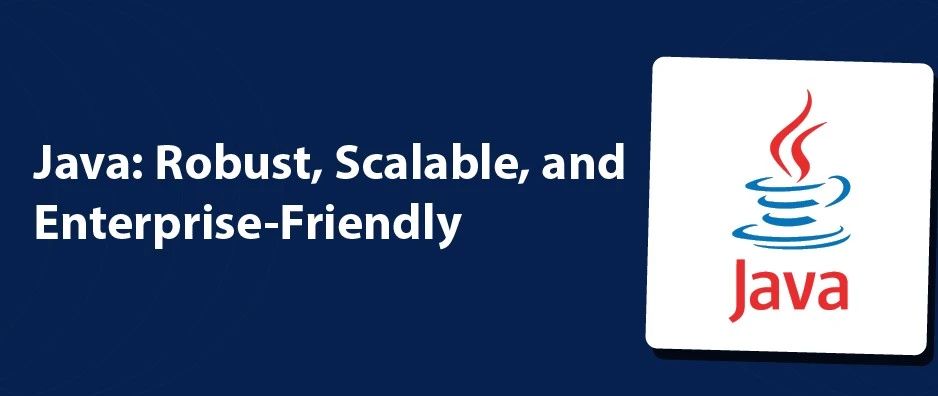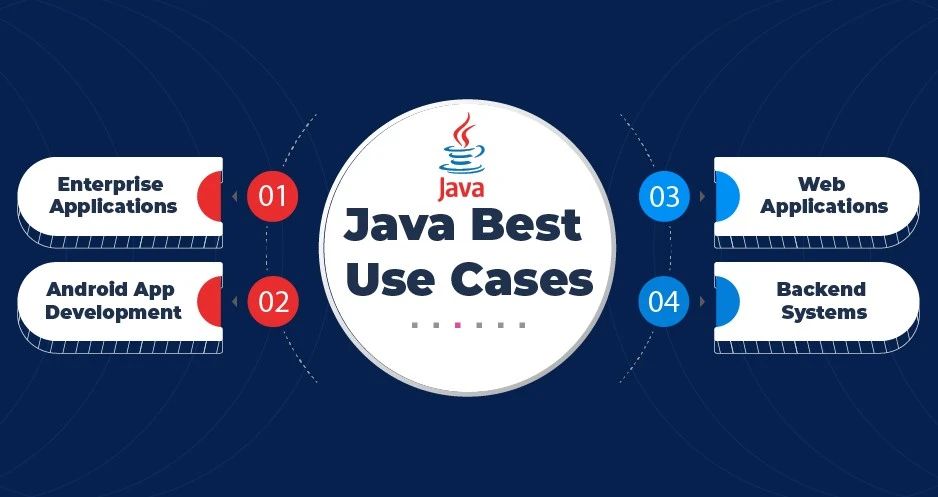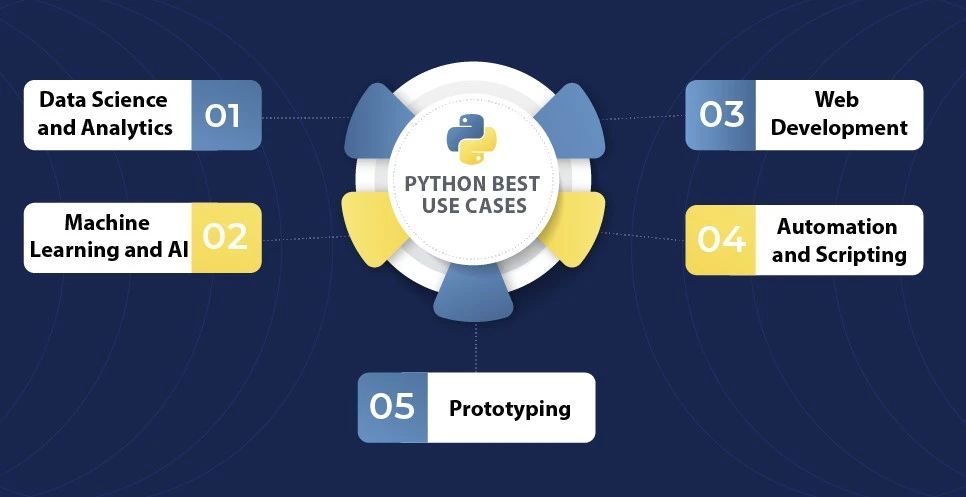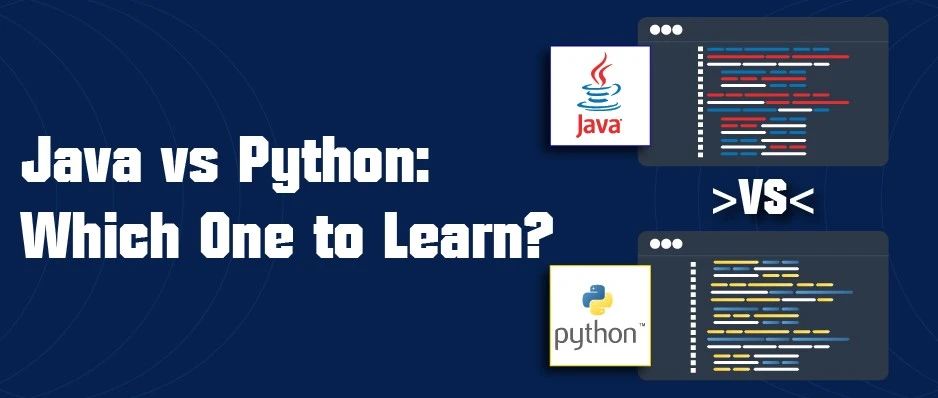Table of Contents
ToggleIntroduction
Despite the constant competition in the software development industry, Java and Python continue to have a strong hold over the market as popular programming languages. The competitive landscape of the IT and Development world makes choosing the right programming language a critical step in your career. Python and Java are among the most popular and versatile languages today, both known for their unique strengths and broad applications. Let’s explore the key aspects of Python and Java, examining which language might be the right fit for you in 2024, depending on your goals, learning style, and career aspirations.

Don't miss out on your chance to work with the best
Apply for top global job opportunities today!
Java: Robust, Scalable, and Enterprise-Friendly

Java is a high-level, object-oriented programming language developed by Sun Microsystems in the early 90s. It is designed to have as few implementation dependencies as possible, making it a popular choice for building platform-independent applications. Java applications can run on any device equipped with the Java Virtual Machine (JVM). Java is widely used for building enterprise-scale, mobile, and web applications.
Key Features of Java
- Object-Oriented: Java follows the object-oriented programming paradigm, which helps organize complex programs into manageable pieces.
- Simple and Portable: Java doesn’t follow the concepts of pointers, multiple inheritance, operator overloading, or explicit memory allocation. This makes the language straightforward and reduces the learning curve.
- Platform-Independent: Java applications are compiled into bytecode that can run on any device with a JVM, making it highly portable.
- Robust and Secure: Java provides strong memory management, exception handling, and security features, making it a reliable choice for critical applications.
- Multithreaded: Java supports multithreading, allowing concurrent execution of two or more threads for maximum CPU utilization.
- Versatile: Java is used in a wide range of applications, from web and mobile development to big data processing and cloud computing, making it a versatile language.
- Automatic Memory Management: Java uses garbage collection to manage memory, which helps prevent memory leaks and other related issues.
Disadvantages of Java
- Verbose Syntax: Java has lengthy and complex syntax compared to many other programming languages, making it difficult for beginners to learn. Writing code in Java often requires more lines and more boilerplate code, which can make development slower and the code harder to read and maintain.
- Slower Startup Time: Java applications can have a slower startup time compared to applications written in languages like Python. This is because Java applications need to be compiled into bytecode and run on the JVM, which can introduce some overhead.
- Memory Consumption: Java applications can consume more memory compared to applications written in other languages. This is partly due to Java’s automatic garbage collection, which, while helpful in managing memory, can also lead to higher memory usage.
- Less Suitable for Scripting and Automation: Java is less suited for scripting and automation tasks compared to languages like Python. Python’s simplicity and extensive standard library make it a preferred choice for writing quick scripts to automate repetitive tasks.
- Limited Support for Emerging Technologies: While Java has a strong community and a rich set of libraries, it is less dominant in emerging fields like data science, machine learning, and artificial intelligence compared to Python. Python’s libraries, such as TensorFlow, PyTorch, and scikit-learn, are widely used and well-supported, making Python the go-to language for these technologies.
Where is Java Used in 2024?

Java’s adaptability and continuous evolution ensure that it remains relevant and widely used across various domains in 2024. Whether you’re interested in enterprise development, mobile apps, or cloud computing, Java offers a robust and versatile platform to build upon. Java continues to be a dominant force in several key areas in 2024:
Enterprise Applications:
Frameworks like Jakarta EE (formerly Java EE) enable developers to use Java remains for building large-scale, distributed enterprise applications. Its robustness, scalability, and security features allow Java to be used to build core components across all tiers of an enterprise application, from the web front end to business logic and integration layers. For example, Java is used in Enterprise Resource Planning (ERP) systems to manage business processes and data. Customer Relationship Management (CRM) systems leverage Java to handle customer interactions and data.
Web and Application Servers:
Java is a backbone for many web-based services and is widely used in web and application servers. Apache Tomcat is a widely used web server that supports Java Servlets and JSPs. Jetty is known for its lightweight and embeddable nature and is used in products like Eclipse and Google App Engine.
Mobile Applications:
The primary language for Android app development is Java (along with Kotlin), which makes it an essential language for mobile developers to learn. Java is also used to create cross-platform applications in frameworks like Xamarin and Apache Cordova.
Big Data Processing:
Java plays a significant role in big data processing due to its scalability and performance. Apache Hadoop, written in Java, is a framework for distributed storage and processing large datasets.
Embedded Systems:
Java’s portability and robustness make it a top choice for embedded systems. For instance, Java is used in Internet of Things (IoT) devices for automation and connectivity.
Cloud Computing:
Java is extensively used in cloud computing to build scalable and maintainable cloud-native applications. For example, you can build and deploy Java applications on Google Cloud using managed services and integrations with tools like Kubernetes.
Read More: Companies that use Java Python: A Simple Start with Versatile Applications

Python is a high-level, interpreted programming language created by Guido van Rossum and first released in 1991. It emphasizes code readability and simplicity, making it an excellent choice for beginners and rapid application development. Python’s design philosophy encourages writing clear and logical code for both small and large-scale projects.
Key Features of Python
- Easy to Learn and Use: Python’s simple syntax and readability make it an ideal language for beginners. The language emphasizes readability and simplicity, allowing new programmers to write and understand code quickly.
- Interpreted Language: Python is an interpreted language, meaning that the code is executed line by line by the Python interpreter. This allows for immediate feedback and easier debugging, as errors are caught and reported at runtime.
- Extensive Libraries: Python boasts a vast standard library and a rich ecosystem of third-party libraries. These libraries cover a wide range of functionalities, from web development (Django, Flask) and data analysis (Pandas, NumPy) to machine learning (TensorFlow, PyTorch) and scientific computing (SciPy).
- Dynamic Typing: Python uses dynamic typing, which means you don’t need to declare the type of a variable when you create one. This flexibility allows for faster development and prototyping, as you can write code without worrying about strict type declarations.
- Cross-Platform Compatibility: Python is cross-platform, meaning it can run on various operating systems, including Windows, macOS, and Linux, without requiring any changes to the code. This portability makes Python an excellent choice for developing applications running on multiple platforms.
- Community Support: Python has a large and active community of developers, which translates to extensive documentation, tutorials, and forums where you can seek help and share knowledge. This strong community support is invaluable, especially for beginners who might need guidance and resources to learn the language.
Disadvantages of Python
- Performance: Python is generally slower than compiled languages like C++ or Java because it is an interpreted language. The interpreter executes code line by line, which can introduce overhead and slow down execution. This can be a significant disadvantage for performance-critical applications, such as real-time systems or high-frequency trading platforms.
- Mobile Development: Python is not the best choice for mobile development. While there are frameworks like Kivy and BeeWare that allow for mobile app development in Python, they are not as mature or widely adopted as native development tools like Swift for iOS or Kotlin for Android. As a result, Python is less commonly used for mobile applications, and developers might face limitations in performance and functionality.
- Memory Consumption: Python can consume more memory compared to other languages. This is partly due to its dynamic typing and the way it manages objects and data structures. For applications that need to be highly memory-efficient, such as those running on embedded systems or handling large datasets, this can be a drawback.
- Runtime Errors: Due to Python’s dynamic typing, type-related errors may only be caught at runtime. This can lead to bugs that are harder to detect and fix compared to statically typed languages, where such errors are caught at compile time. This can affect the reliability of the code, especially in large and complex projects.
- Limited Support for Low-Level Programming: Python is not well-suited for low-level programming tasks, such as operating system development or writing device drivers. Its high-level nature and abstraction from hardware mean that it lacks the control and efficiency required for such tasks. Languages like C or C++ are typically preferred for low-level programming.
Where is Python Used in 2024?

In 2024, Python continues to be a dominant force across various domains due to its versatility and ease of use:
Artificial Intelligence (AI) and Machine Learning (ML):
Python is the go-to language for AI and ML, with libraries like TensorFlow, PyTorch, and scikit-learn.
Data Science and Analytics:
Python is extensively used for data analysis, visualization, and manipulation with tools like Pandas, NumPy, and Matplotlib
Web Development:
Frameworks like Django and Flask make Python a popular choice for building web applications.
Automation and Scripting:
Python’s simplicity makes it ideal for writing scripts to automate repetitive tasks.
Scientific Computing:
Python is used in scientific research for simulations, data analysis, and complex calculations.
Internet of Things (IoT):
Python is used in IoT projects for its simplicity and the availability of libraries like MicroPython.
Game Development:
Python is used in game development with libraries like Pygame.
Cloud Computing:
Python is widely used to develop and manage cloud-based applications.
Java vs Python: Comparison Table
| Feature | Java | Python |
|---|---|---|
| Syntax | Statically typed, verbose | Dynamically typed, concise |
| Performance | Generally faster due to JIT compilation | Slower due to interpreted nature |
| Use Cases | Enterprise applications, Android apps | Web development, data science, scripting |
| Learning Curve | Steeper due to complex syntax. | Gentler due to simple, readable syntax |
| Libraries/Frameworks | Rich ecosystem (Spring, Hibernate) | Extensive libraries (NumPy, Pandas, Django) |
| Community Support | Large, mature community | Large, active community |
| Memory Management | Automatic garbage collection | Automatic garbage collection |
| Concurrency | Strong support with multi-threading | GIL limits true multi-threading |
| Development Speed | Slower due to verbose syntax | Faster due to concise syntax |
| Platform | Platform-independent (JVM) | Platform-independent (JVM) |
Java vs Python: Best Use Cases
Java Best Use Cases
Enterprise Applications: Java’s scalability, robustness, and platform independence make it ideal for enterprise-level applications, especially in banking, finance, and large-scale business solutions. Examples are ERP (Enterprise Resource Planning) systems and customer relationship management (CRM) tools.
Android App Development: Java is the primary language for Android app development, supported by Google’s Android SDK. Instagram and Spotify are among the Android apps popularly used by Android phone users.
Web Applications: Java frameworks like Spring and Struts are used to build secure and scalable web applications. Examples are government portals and e-commerce platforms.
Backend Systems: Java can handle large-scale backend operations. This makes it suitable for financial services and other data-intensive industries where payment gateways and trading platforms are used.
Must Read: 150 Java Interview Questions for Freshers
Python Best Use Cases
Data Science and Analytics: Python is used extensively in data science in data analysis, visulalization, and reporting tools due to its simplicity and powerful libraries like Pandas, NumPy, and Matplotlib.
Machine Learning and AI: Libraries such as TensorFlow, Scikit-learn, and PyTorch make predictive analytics and working with recommendation systems easy. This makes Python a favorite for developing machine learning models.
Web Development: Python frameworks like Django and Flask allow for rapid development and deployment of web applications, and are used to build content management systems and web services.
Automation and Scripting: Python’s ease of use makes it suitable for writing scripts to automate daily repetitive tasks. For example, data scripting and batch processing become easy with Python.
Prototyping: Python’s simple syntax and extensive libraries make it ideal for quick prototyping and iterative development. As a result, Python is used in MVP (Minimum Viable Product) development for startups.
When to Use Java and Python?
Java is ideal for high-performance, enterprise-grade applications that demand scalability, security, and reliability. This makes it well-suited for industries like finance, e-commerce, and Android development. Further, Java offers robust support for multithreading and strong frameworks like Spring, which makes it a great choice for backend systems, distributed environments, and high-traffic applications. Python, on the other hand, shines in data science, machine learning, automation, and rapid application development. Its simple syntax and extensive libraries, such as Pandas and Django, make it the preferred choice for web development, scripting, and prototyping. Python is excellent for analytics, automation, and quick turnaround projects, whereas Java fits better in situations requiring performance, system stability, and enterprise functionality.
Java vs Python: Performance Comparision
Java is generally faster than Python due to its compiled nature. Python, being an interpreted language, may run slower but allows for rapid prototyping, which is crucial in research, data science, and startups where innovation speed is essential. Java’s performance and scalability make it a strong choice in scenarios where processing power and speed are critical, such as large-scale data handling and financial systems.
Job Market and Career Prospects
Both languages are in high demand, but job opportunities differ by industry:
Python skills are highly sought in fields like data science, AI, and machine learning, and Python roles often command high salaries due to the increasing reliance on data-driven decision-making.
Java remains crucial in finance, e-commerce, and enterprise solutions, where stability, security, and scalability are paramount. Java developers are well-compensated, especially in sectors that rely on Android applications and large backend infrastructures.
Python vs Java: Which is the Best Language to Learn?

Java and Python are in the top 10 of the TIOBE Index of October 2024. In the debate between the two languages, one must understand that both Java and Python continue to be relevant, and your choice should align with your career goals and the type of projects you aspire to work on. If you’re aiming for a career in data science, machine learning, or AI, Python is the clear choice. Its simplicity, extensive libraries, and ease of use make it ideal for beginners and experts alike. On the other hand, if you’re interested in mobile development, large-scale enterprise software, or financial technology, Java is a valuable skill with strong career prospects in established industries.
Java vs Python: Is One Better Than the Other?
Both Java and Python have strong community support and extensive libraries. Their popularity is evident in the Stack Overflow Developer Survey 2024, where Java and Python are among the top 10 in the list of programming, scripting, and markup languages.Both languages ensure continued relevance and utility in the evolving tech landscape. Both can be best in the context of the projects. Ultimately, your decision should align with your career goals and the type of projects you envision working on. Both Python and Java offer unique advantages, and many developers learn both over time, allowing them to tap into a wider range of opportunities. For those new to coding, starting with Python may provide an easier entry, while Java is a solid next step to broaden your skills in backend and mobile development.
Take control of your career and land your dream job
Sign up with us now and start applying for the best opportunities!


